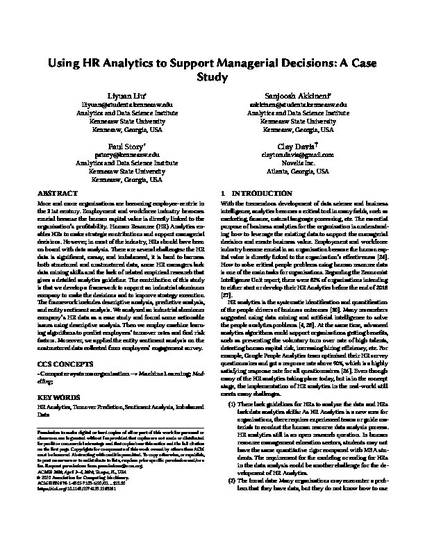
Other
Using HR Analytics to Support Managerial Decisions: A Case Study
(2020)
Abstract
More and more organizations are becoming employee-centric in
the 21st century. Employment and workforce industry becomes
crucial because the human capital value is directly linked to the
organization’s profitability. Human Resource (HR) Analytics enables
HRs to make strategic contributions and support managerial
decisions. However, in most of the industry, HRs should have been
on board with data analysis. There are several challenges: the HR
data is significant, messy, and imbalanced, it is hard to harness
both structured and unstructured data, some HR managers lack
data mining skills and the lack of related empirical research that
gives a detailed analytics guideline. The contribution of this study
is that we develop a framework to support an industrial aluminum
company to make the decisions and to improve strategy execution.
The framework includes descriptive analysis, predictive analysis,
and entity sentiment analysis.We analyzed an industrial aluminum
company’s HR data as a case study and found some actionable
issues using descriptive analysis. Then we employ machine learning
algorithms to predict employees’ turnover rates and find risk
factors. Moreover, we applied the entity sentiment analysis on the
unstructured data collected from employees’ engagement survey.
Keywords
- HR Analytics,
- Turnover Prediction,
- Sentiment Analysis,
- Imbalanced Data
Disciplines
Publication Date
April, 2020
DOI
https://doi.org/10.1145/3374135.3385281
Citation Information
Liyuan Liu, Sanjoosh Akkineni, Paul A. Story and Clay Davis. "Using HR Analytics to Support Managerial Decisions: A Case Study" (2020) Available at: http://works.bepress.com/paul-story/14/
